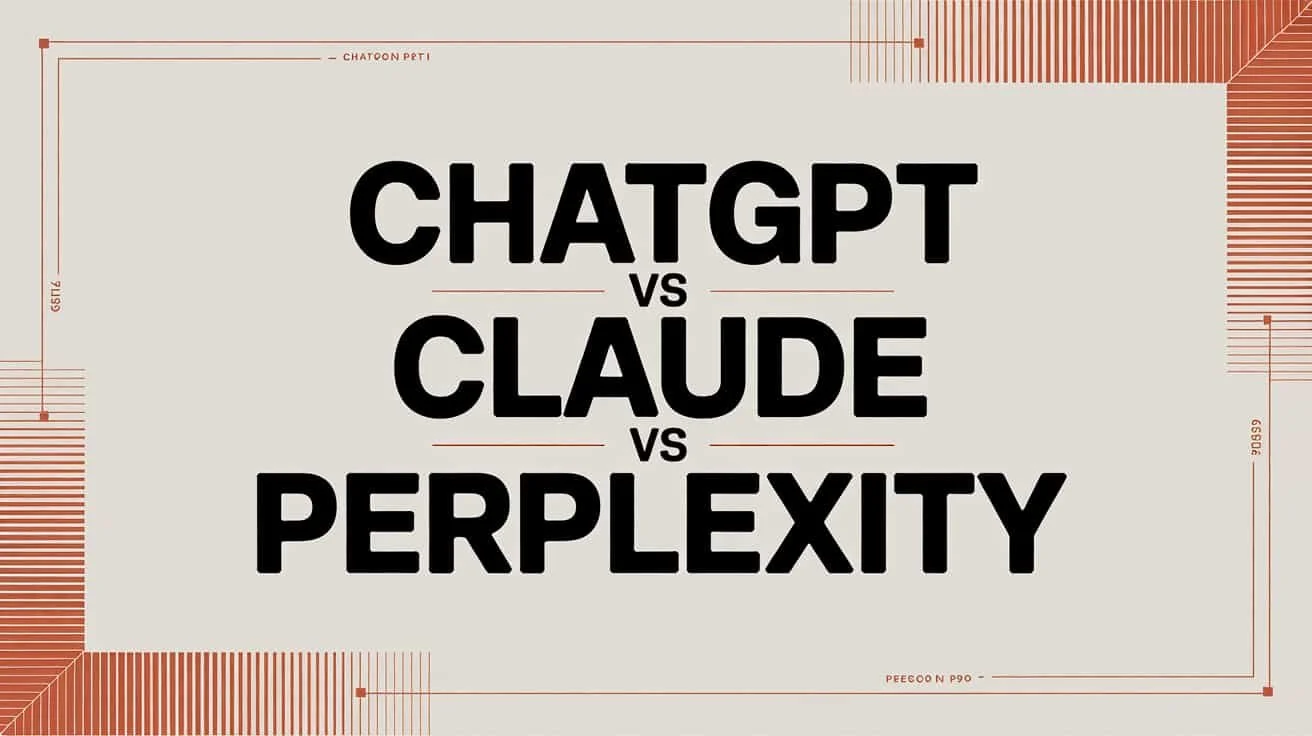RACE model for ChatGPT: how to write better prompts with structure
Why do you sometimes get brilliant answers from ChatGPT and other times vague chatter? The difference lies in your prompt. Effective AI communication starts with structured prompt engineering. The RACE model offers marketers, entrepreneurs, and professionals a proven framework to systematically write better instructions for large language models and conversational AI tools.
- 4-step structure: Role (AI identity), Action (what needs to happen), Context (target audience/style), Examples (examples)
- Role activates expertise: "You are a B2B copywriter" activates jargon, tone-of-voice, and level of knowledge
- Action gives direction: Clear verbs such as "write", "generate", "analyze" prevent vague output
- Context specifies: Target audience, product, style, goal make AI answers more accurate and relevant
- Examples accelerate learning: AI learns faster through examples than abstract instructions
- Sector applications: From e-commerce to HR, social media to data analysis - RACE works universally
This methodology of Role, Action, Context, and Examples ensures that ChatGPT, Claude, Gemini, and other AI assistants consistently provide the output you really need. Research shows that companies that apply structured prompt engineering achieve a 340% higher ROI on their AI investments. For companies that are serious about using AI for growth, this methodology is essential.
What is the RACE model for AI prompt engineering?
The RACE model is a practical framework for prompt engineering that AI specialists worldwide use. This structured prompting system consists of four core components:
Role: Give the AI a specific role, persona, or expertise
Action: Describe exactly what task needs to be performed
Context: Provide relevant background information and parameters
Examples: Show concrete examples of desired style or output format
This systematic approach ensures that generative AI models like ChatGPT, Claude, and Gemini understand exactly what you expect, for which target group, and in what form. The result? More relevant, consistent, and usable AI-generated content.
“Our job isn't getting any easier as marketers. With increasing demands, higher expectations, tighter budgets, and an ever-growing list of channels to manage, marketers are feeling the pressure”
Source: INBOUND - Beyond Content Creation: OpenAI's Dane Vahey on AI-First Marketing
R = Role: give ChatGPT an identity
ChatGPT performs better when you make it clear what role it should play. This persona activates relevant knowledge, jargon, and thought patterns.
Effective role formulations:
"You are a B2B marketer with 10 years of experience in SaaS companies."
"You are an e-commerce consultant specializing in conversion optimization."
"You are a content strategist for technical SMEs in Belgium."
"You are an experienced UX designer who simplifies complex flows."
Why this works: By assigning a role, the AI model activates specific knowledge domains and automatically applies the correct tone-of-voice and level of complexity. This principle applies not only to ChatGPT, but to all aspects of AI marketing strategies.
A = Action: define exactly what task needs to be performed
This is the verb part of your AI prompt. Without clear, specific action instructions, you often get vague, too broad, or inconsistent answers from generative AI tools.
Powerful action words for AI prompting:
Write a...
Generate 5...
Analyze the data from...
Optimize this content for...
Summarize...
Compare these options...
Transform this into...
Example: "Write a follow-up email for B2B prospects who downloaded an AI whitepaper but haven't booked a product demo yet."
The action component should be as specific and measurable as possible. Instead of "help me with digital marketing," ask "generate 3 LinkedIn ads for our AI audit offer, optimized for CTR." For more insights into effective online marketing strategies and digital advertising, check out our specialized services.
C = Context: provide crucial background information
Context forms the backbone of effective AI communication because large language models work based on probability calculations and pattern matching. The more specific and relevant your context, the more accurate and useful the AI-generated result.
Essential context elements for business AI:
Target audience: demographics, sector, function, experience, pain points
Product/service details: what exactly are you selling, unique value proposition
Business objective: inform, persuade, activate, convert, retain?
Brand voice: formal, informal, technical, accessible, authoritative, friendly?
Restrictions and parameters: word count, deadline, budget, compliance requirements
Distribution channel: email, social media, website, print, video
Competitive landscape: market position, differentiation factors
Practical example: "Target audience: SME business owners in the retail sector, 30-55 years old, budget €50k-200k. Product: omnichannel e-commerce platform with AI-driven personalization. Brand voice: professional but accessible, no technical jargon. Business goal: persuade to book a product demo within 14 days."
Context becomes especially crucial in strategic lead generation, where you need to know exactly who you are addressing, why, and through which channel.
“What I'm obsessed with are AI primitives - the things you need to successfully build today. These fundamental capabilities can change the way you think, strategize, and execute”
Source: INBOUND - New Year, New Skills: How to Master AI in 2025
E = Examples: show what you mean
Examples are optional but incredibly powerful. AI learns faster through examples than through abstract instructions.
Types of examples:
Style Example: "Use this tone: 'Do you know the difference between being busy and being productive?'"
Structure Example: "Start with a question, provide 3 bullet points, conclude with a CTA."
Format Example: "Subject line: [Benefit] in [Time] for [Target Audience]"
Example: "Write like this excerpt: 'Forget complicated dashboards. Our tool gives you the numbers that matter in 30 seconds.'"
For more in-depth techniques, read our article on writing better prompts.
From vague to powerful: a practical example
Without RACE (vague): "Write an email about our new app."
With RACE (powerful): "You are a tech copywriter with experience in B2B SaaS. Write an announcement email for the launch of our new marketing automation platform. Target audience: marketing managers at SMEs with 20-200 employees. Tone: enthusiastic but professional. Add a catchy subject line and conclude with a demo CTA. Use this style as a reference: 'Imagine: your next campaign runs completely automatically while you focus on strategy.'"
The difference is clear: the structured RACE version delivers immediately usable, brand-focused content that resonates with your specific target audience and business objectives. Want to learn how to apply this systematically in your organization? Check out our ChatGPT masterclass 2025 guide for advanced AI prompt engineering techniques.
Sector-specific RACE applications for business AI
E-commerce and retail
"You are a product content specialist for sustainable fashion brands. Write 3 SEO-optimized product descriptions for a recycled sportswear collection, target audience: environmentally conscious millennials aged 25-40. Tone: inspiring and informative, focus on the sustainability story."
B2B sales and lead nurturing
"You are a B2B sales consultant specializing in business software. Develop a LinkedIn outreach sequence for IT managers at medium-sized manufacturing companies. Focus: cybersecurity compliance and ROI. Tone: professional but personal, no sales jargon."
Content marketing and SEO
"You are an SEO content strategist for tech SMEs. Generate 10 long-tail keywords around 'AI implementation retail sector' aimed at Dutch decision-makers. Add search intent analysis and content angle suggestions."
HR and talent acquisition
"You are a recruitment specialist for a scale-up environment. Write an employer branding job posting for a senior digital marketing manager position. Tone: energetic and authentic, emphasize growth opportunities and company culture."
Management consultancy
"You are a strategy consultant with a McKinsey background. Create a 200-word management summary about the impact of AI transformation on supply chain management, aimed at C-level executives in manufacturing."
This sector-specific approach works excellently in combination with AI automation for various business sectors and industry verticals.
“Thinking becomes a use case that I hope all marketers will embrace. With AI’s new reasoning model, AI can now take time to analyze problems, generate multiple hypotheses, and deliver extensive analyses”
Source: INBOUND 2024 - Beyond Content Creation OpenAI Dane Vahey
Advanced RACE techniques
Multi-step prompting
For complex tasks, use the RACE model in steps:
Setup prompt: Define role and context
Task prompt: Give specific action
Refinement prompt: Ask for improvement with examples
Chain-of-thought reasoning
Add to your Action: "Think step by step and explain your reasoning."
Refinement prompt
Ask for improvement with examples for more advanced techniques; check out our article on prompt engineering for advanced users.
Template for reusable prompts
You are a [ROLE - specific function/expertise].
[ACTION - what needs to happen], for [CONTEXT - target audience].
Consider: [CONTEXT - constraints/requirements].
Tone: [CONTEXT - style/character].
Use this as a style example: "[EXAMPLE - concrete reference]."Example:
You are an experienced email marketer specializing in B2B lead generation.
Write a nurture email sequence of 3 messages for prospects who requested a free AI audit but have not yet booked a meeting.
Consider: average consideration time of 2 weeks, focus on building trust.
Tone: professional but human, no jargon.
Use this as a style example: "Have you had a chance to think about the AI opportunities we discussed? No pressure - we understand these are big decisions."Measurable business results from systematic prompt engineering
Organizations that systematically implement the RACE model and other structured prompt engineering frameworks report significant performance improvements:
73% faster content production with consistent brand voice and messaging
84% better first contact resolution in AI-powered customer service systems
91% higher reliability of AI-generated business insights and data analysis
340% return on AI technology investments versus unstructured prompt approaches
These quantified results are comparable to what we observe with enterprise clients who invest in a strategic AI audit for SMEs and systematic AI transformation roadmaps.
“We can use AI to understand natural language, what's happening in forms, and change the experience within our company. With AI costs dropping from $36 to just 25 cents per million tokens in a year, advanced automation is becoming accessible to companies of all sizes”
Source: Centre for Future Generations - Beyond the AI Hype FAQ
Avoiding common mistakes
Too many instructions in one prompt
Split complex tasks into multiple steps for better accuracy.
Vague requirements
"Make it better" is not a useful instruction. Be specific about what "better" means.
Too many examples
More than 3-5 examples often dilute the main message.
No testing
Test your prompts with different inputs to discover weak spots.
Company AI strategy: the future of prompt engineering
Prompt engineering for business applications is evolving exponentially towards 2025 and beyond:
Multimodal AI prompting: Integrated text, image, audio, and video input for comprehensive AI interactions
Adaptive large language models: AI systems that adapt in real-time to user behavior patterns and historical preferences
Mega-prompts and context-aware AI: Detailed instruction frameworks with extensive context windows and domain knowledge
Ethical AI prompting: Focus on algorithmic bias reduction, transparency requirements, and responsible AI governance
These technological developments demonstrate how AI copywriting is evolving and the transformative impact it has on content marketing, customer communications, and brand voice consistency.
“We're really trying to reimagine what it means for everyone to do research with ChatGPT and how every marketer can be a researcher. With tools like Search GPT, marketers can quickly gather insights that were previously time-consuming”
Source: The Decoder - OpenAI's Marketing Chief Says o1 Can Handle 5-Hour Tasks
The competency to communicate effectively with AI systems is becoming exponentially valuable for business professionals. McKinsey research indicates that generative AI has the potential to automate work activities that currently consume 70% of employee time. For marketing professionals, this means unprecedented opportunities, as detailed in our comprehensive overview of top AI tools for marketers 2025.
Practical next steps
Start small: Apply RACE to one specific use case
Document: Save successful prompts for reuse
Iterate: Refine prompts based on results
Measure: Track quality, time, and satisfaction
Scale: Expand to other departments and processes
“The performance of AI models has significantly improved from GPT-3 to GPT-4 to the latest model, o1. They can now handle tasks that take up to five hours, such as developing detailed strategies”
Source: The Decoder - OpenAI's Marketing Chief Says o1 Can Handle 5-Hour Tasks
The RACE model is not a magical AI formula, but a scientifically sound, systematic method to consistently achieve superior results from generative AI investments. Organizations that learn to work with artificial intelligence as strategic leaders with high-performing teams achieve significantly better business results and competitive advantages.
Implement today: select one repetitive business task where you currently use ChatGPT or other AI tools and systematically apply the complete RACE framework. You will be amazed by the measurable improvement in output quality, consistency, and business relevance.
For comprehensive AI strategy support, you can book a video call with our certified AI specialists, or enhance your team's skills through professional AI training workshops and implementation programs.
Ready for AI transformation? Discover how strategically combining SEO and AI can exponentially improve your organic visibility, or explore the extensive possibilities of performance marketing in the AI era for revenue acceleration and customer acquisition optimization.

🚀 More leads, higher conversion, better ROI
This article gave you insights. Now it's time for action. Whether you want to build a profitable webshop, generate more revenue from performance marketing or SEO, or grow with AI-marketing - we'll help you move forward concretely.
💬 Discuss your challenge directly with Frederiek: Schedule a free strategy session or send us a message
📧 Prefer to email? Send your question to frederiek@clickforest.com or call +32 473 84 66 27
Strategy without action remains theory. Let's take your next step together.
Frequently asked questions about the RACE model
-
Not necessarily. For simple tasks, Role and Action often suffice. For complex projects, Context and Examples are essential for quality.
-
Modern AI models can handle prompts of book lengths. Focus on relevance, not brevity. An extensive prompt often yields better results than a short one.
-
Absolutely. RACE works well with chain-of-thought reasoning, self-evaluation, and other prompt engineering techniques.
-
Yes, the framework is effective for Claude, Gemini, Copilot, and other large language models. The principles remain the same.
-
Track output quality, time per task, number of iterations needed, and user satisfaction. Set KPIs for accuracy and efficiency.
-
Take specialized courses, experiment with different use cases, and stay updated on new developments in AI tools and techniques.
-
Despite advances in adaptive AI, human input remains crucial. Prompt engineering evolves with AI developments and becomes more strategic rather than redundant.
-
Instructions that are too vague, missing context, inconsistent formatting, and lack of testing with different inputs. Overcomplicating simple tasks also happens frequently.
-
Create standardized prompt templates, document successful prompts, train team members in the methodology, and share best practices regularly.
-
The investment varies from training (a few thousand euros) to external consultancy. The ROI is typically high: companies report an average return of 340% within 6 months.
Sources and references
RACE model for marketing:
Smart Insights: "The RACE framework: a practical digital marketing strategy framework" - https://www.smartinsights.com/digital-marketing-strategy/race-a-practical-framework-to-improve-your-digital-marketing/
Dave Chaffey: "RACE marketing model definition - development of the Smart Insights RACE planning framework" - https://www.davechaffey.com/digital-marketing-glossary/race-marketing-planning-model/
Attico: "RACE marketing model - introduction of a planning framework for business growth" - https://attico.io/insights/race-frameworks
RACE model applications:
Adonis Media: "How to use the RACE framework for B2B digital marketing" - https://www.adonis.media/insights/what-is-the-race-framework
Cision: "Using the RACE model in PR campaign planning" - https://www.cision.com/resources/articles/race-model-pr-campaign-planning/
Userpilot: "Using the RACE framework to boost conversion for your SaaS" - https://userpilot.com/blog/race-framework/
Prompt engineering frameworks:
AI WorkFlow Studio: "2025 Complete guide to prompt frameworks: 18 practical frameworks to improve your AI conversation efficiency 10x" - https://aiworkflowstudio.com/prompt-framework-guide-2025/
Steal These Thoughts: "The best AI prompt framework for work (2025)" - https://stealthesethoughts.com/2024/07/29/the-best-ai-prompt-frameworks-for-business-2024/
EncodeDots: "Prompt frameworks 2025 explained: what works and why" - https://www.encodedots.com/blog/prompt-frameworks-2025/
Structured prompts and templates:
ClickUp: "50+ AI templates to save time and improve productivity" - https://clickup.com/blog/ai-prompt-templates/
Structured Prompt: "Structured prompt - prompt engineering tool for ChatGPT" - https://structuredprompt.com/
Atlassian: "The ultimate guide to writing effective AI prompts" - https://www.atlassian.com/blog/artificial-intelligence/ultimate-guide-writing-ai-prompts













